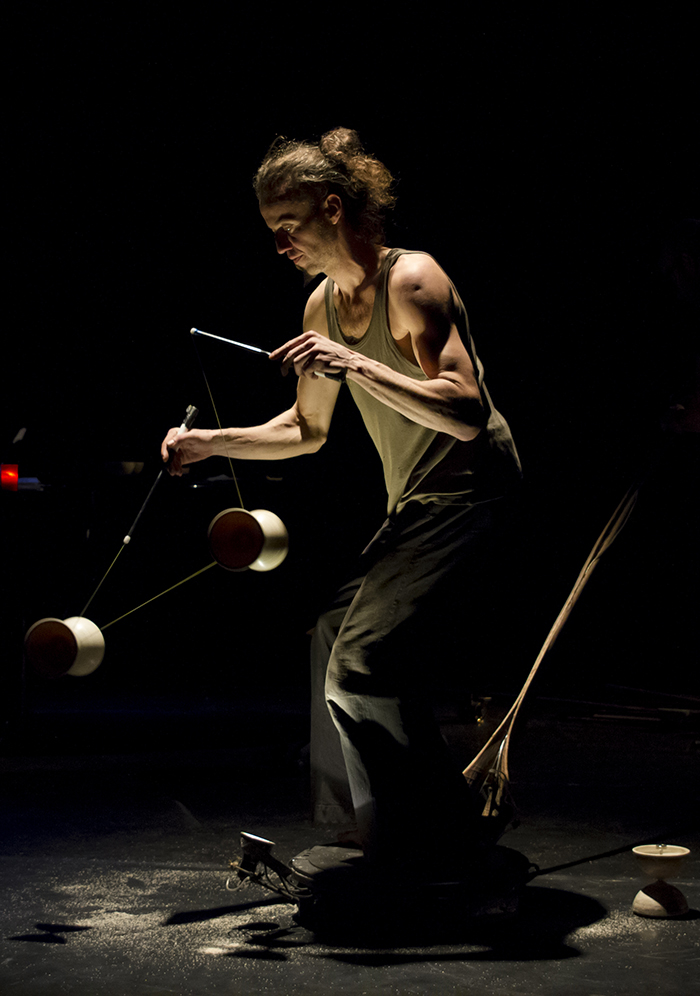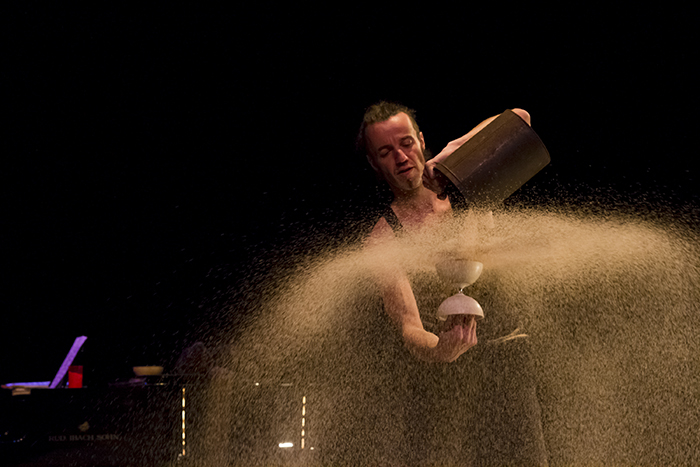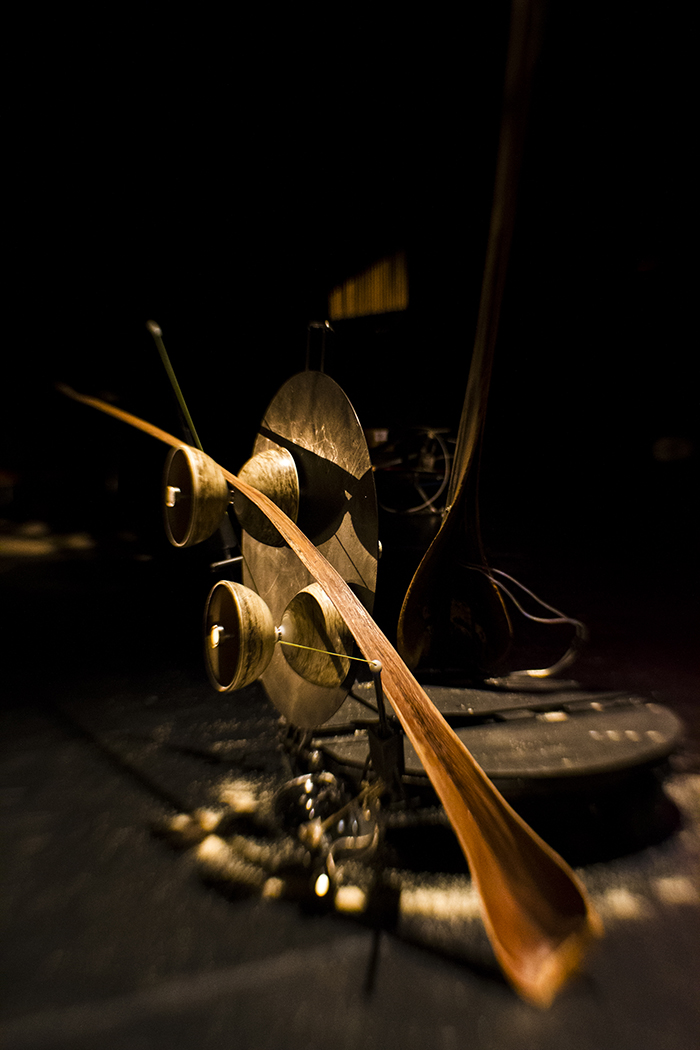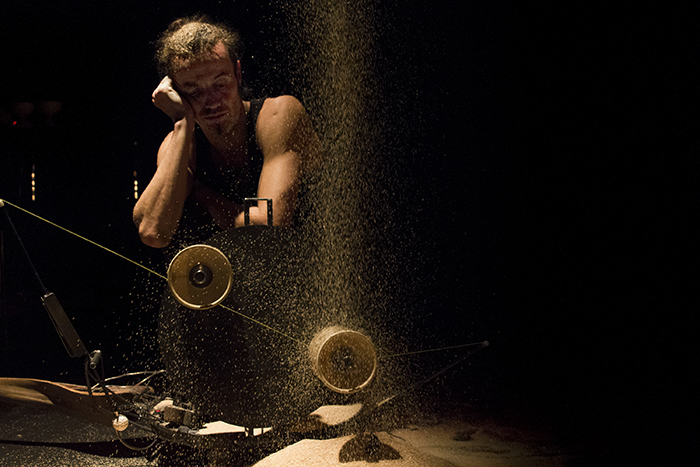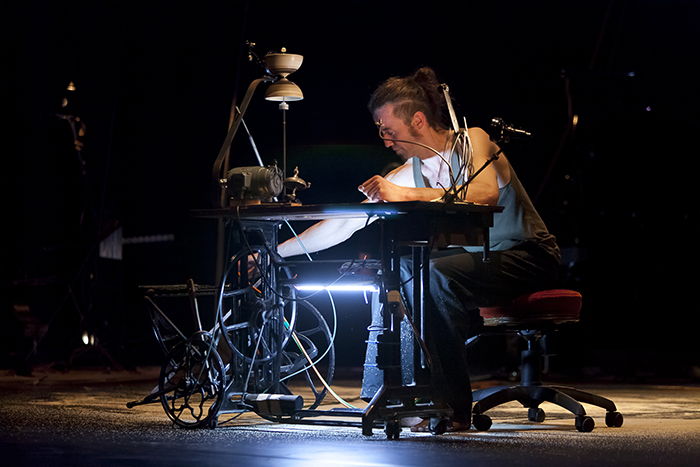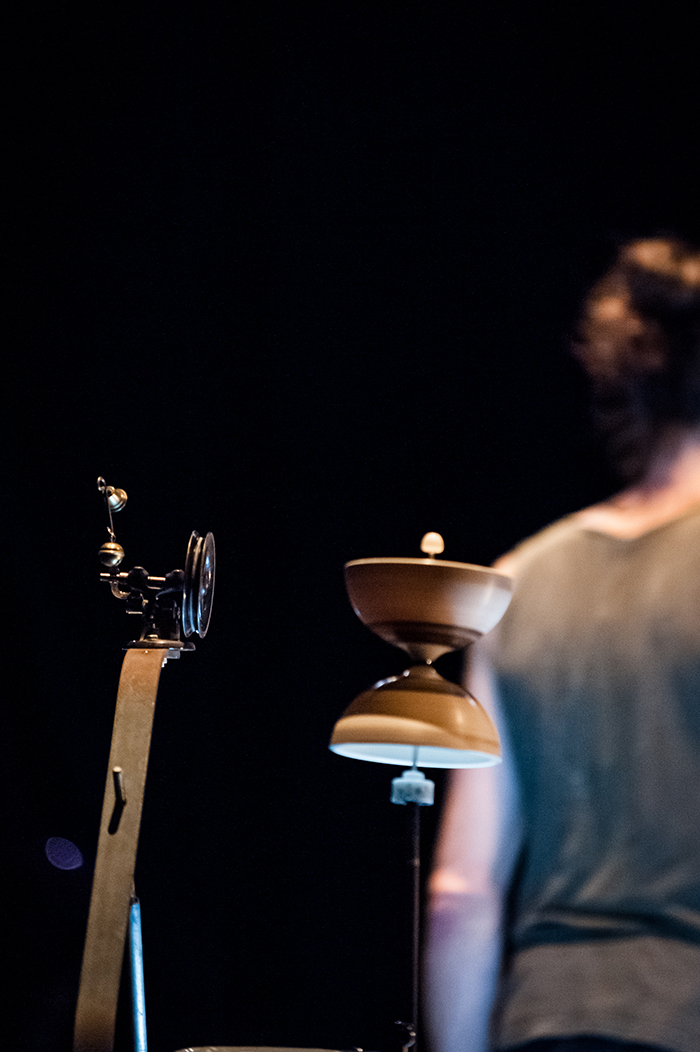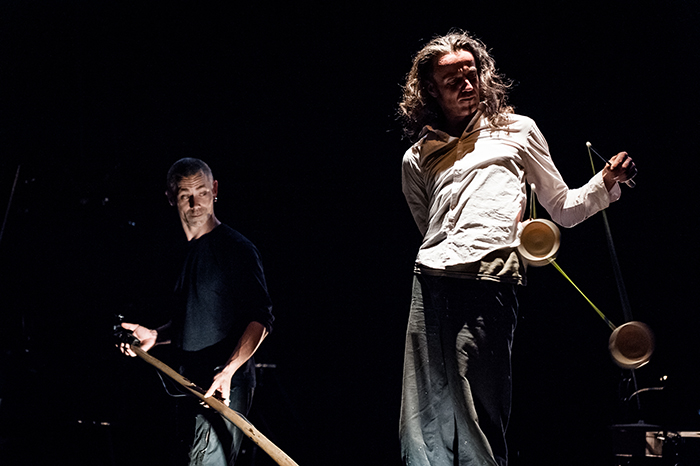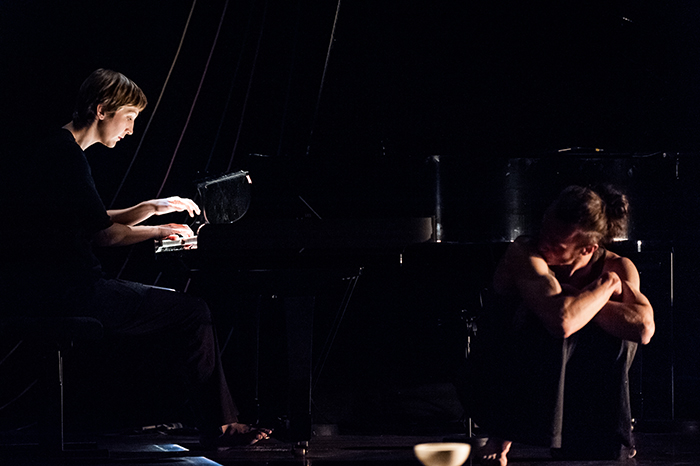ArbeiT: About
On the stage
In the beginning is the diabolo, a spinning object, that’s requires a steady acceleration. Usually, this is done with arduous physical labor – but can a machine do it also? This concept was the starting point, the juggler gets tired, and a fertile imagination starts…
In this piece, the diabolo is not used as a circus object. Instead, the idea is to amplify the constraints inherent in the object, to use them theatrically to explore the theme, to develop this thread further and expand it to include the relationship between man and machine and to explore the resulting hierarchical structures and interdependencies.
A handful of machines, an old treadle sewing machine, a flying pendulum, curious mechanical objects… a hodgepodge of items, old and new. And in the middle of it all, an elegant black concert grand.
At the beginning, everything is neatly arranged. Everything is in its place, both the objects and the performers. The pianist sits at her piano, the juggler stands center stage, the technician (or quiet worker) sits at his lighting console, which is in a corner of the stage.
The work begins: Each performer moves in his specific sphere in an interaction between person and object, without hierarchical relationships between the performers. Gradually, the boundaries dissolve. Machines come into play, reducing work, taking on multiple functions, gaining independence. An illusory world builds, in the shadow of which an inconspicuous worker keeps the machinery running. And everything turns…
Until the final image: the protagonist lying in a sea of sawdust. He has come closer to the goal of having minimized his work [from Old High German: Werk, “toil”, “torment”]. Now all the hurly-burly continues without his help. A lonely machine, making rasping sounds, moves three Diabolo continuously in a circular course, and a tiny mechanical piano plays a little music…
Inner drive
Laziness is an important driving force. Not simple idleness, but the desire to devise clever or even bizarre solutions that require the least possible expenditure of personal effort to perform actions. I do this by using the force of the other performer, for example, or by constructing machines to assist me, automating actions and accelerating them.
The comical aspect in the relationship between man and machine should be explored and hierarchies should be translated into movements or actions that may appear strange, but are really logical outgrowths of laziness.
Performing artists communicate using a specific vocabulary; like any profession, the theatre has its own jargon. What if I were to replace the critical vocabulary of my work with that of another field? How do terms used to express a feel or an understanding of one context change when applied to another? What if I suddenly use terms from economics to describe my work as a performer? What if I juggle and manipulate words like division of labor, outsourcing, effectiveness, optimization, efficiency, increased output?
What new images form in the spectators’ minds and how are existing ones changed and shaped? Can the economic data that is so omnipresent these days be used to define human relationships?
Craftsmanship and manual labor have been relegated to the sidelines. Physical labor is something to be avoided. Does using fewer human resources make something more efficient? Better?
We prefer to hand over our physical and intellectual activities to technical achievements whose inner lives we cannot see. Complex production sequences, machines, systems, and financial flows are beyond our comprehension, let alone our control.
In my work as an artist, I operate at the other end of the spectrum: juggling and manipulating objects requires precise physical work and total control at all times.
What happens, then, if I allow the same historical developments that have affected human labor to flow into my artistic creations? What if I break my actions down into separate, single steps, automate them, outsource them, or hand them off to machines?

